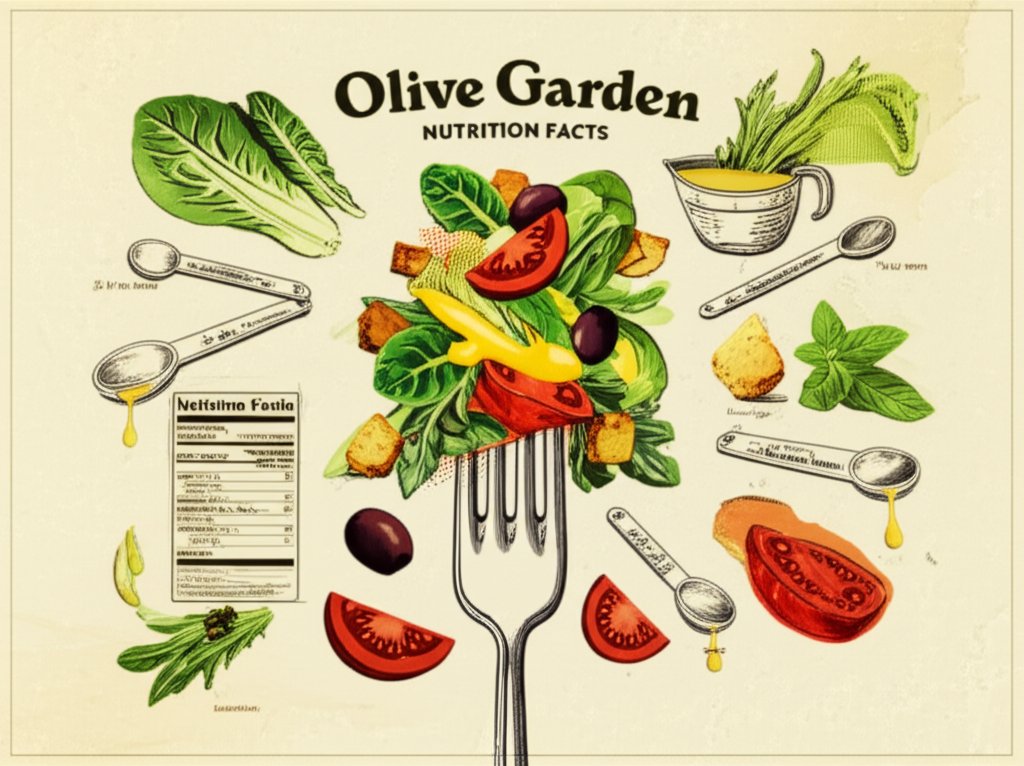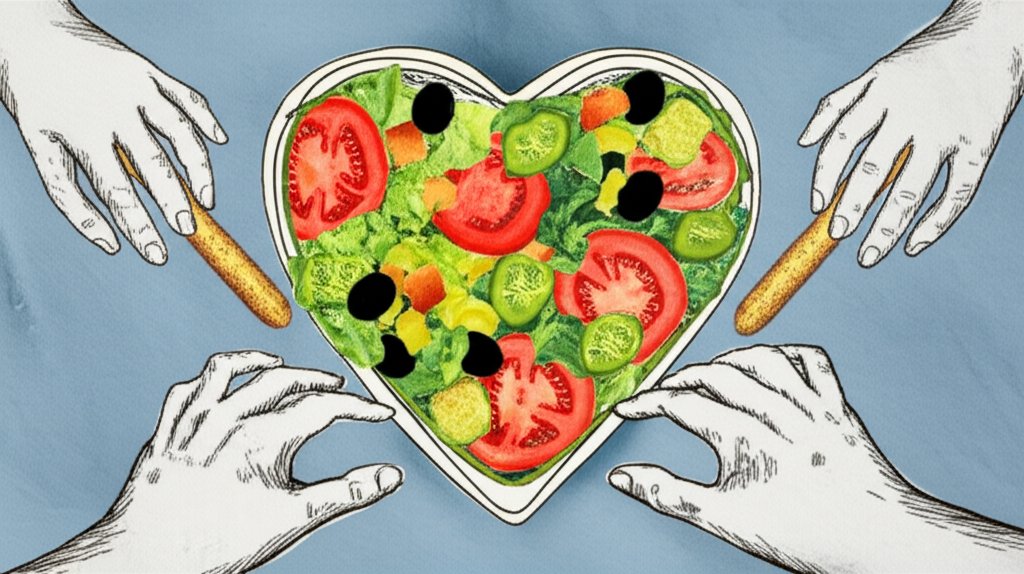Olive Garden Salad Nutrition Facts: What’s Really In It?

Trying to eat healthily while managing restaurant dining can feel like navigating a minefield. Even seemingly simple choices, like ordering an Olive Garden salad, require a closer look at the nutrition facts. Is it just a harmless bowl of greens, or are there hidden calorie and sodium bombs lurking beneath the surface?
At a Glance:
- Understand the base salad nutrition and how it can quickly change.
- Learn how dressings impact the overall calorie and fat content.
- Discover strategies for customizing your salad to make it a healthier choice.
- Compare the Olive Garden salad to other salad options in terms of nutrition.
- Get practical tips for enjoying your salad while staying on track with your dietary goals.
The Foundation: Olive Garden’s Salad Base
The base Olive Garden salad, before any dressing, croutons, or cheese, is relatively low in calories. It’s primarily a mix of iceberg lettuce, romaine lettuce, tomatoes, red onions, and black olives. This foundation provides some vitamins and minerals but is mostly water and fiber. The issue isn’t necessarily the base ingredients themselves, but what’s added to them.
Quick Tip: A large portion of the Olive Garden salad’s “healthiness” depends on portion size. A single serving can easily become two or three, especially with unlimited refills.
The Dressing Dilemma: Where Calories Skyrocket
The biggest contributor to the Olive Garden salad’s nutritional profile is the dressing. Their signature Italian dressing is high in fat and calories, transforming a light salad into a much more substantial dish.
- Italian Dressing Impact: A single serving of Olive Garden’s Italian dressing (about 3.5 tablespoons) can add over 250 calories and 25 grams of fat to your salad. That’s more than some entire meals!
Step-by-Step Dressing Control:
- Ask for dressing on the side: This gives you complete control over how much you use.
- Dip, don’t drench: Instead of pouring the dressing, dip your fork into the dressing before each bite.
- Use a smaller portion: Ask for a smaller ramekin of dressing, or only use half of what’s provided.
- Consider other options: Ask if they have any light vinaigrettes or lower-fat dressings available, though options may be limited.
Croutons, Cheese, and Other Culprits
Beyond the dressing, croutons and grated cheese also contribute significantly to the calorie and fat content of the Olive Garden salad.
- Crouton Consideration: Croutons are essentially fried bread, adding carbs and fat without much nutritional value.
- Cheese Calorie Count: While cheese provides calcium and protein, it’s also high in calories and saturated fat.
Reducing the Extras: - Ask for no croutons: This simple request can save you a significant number of calories and refined carbs.
- Request light cheese: Ask your server to go easy on the cheese, or request it on the side so you can control the portion.
Customizing for a Healthier Salad: A Practical Playbook
Here’s a breakdown of how to transform the Olive Garden salad into a healthier choice, keeping in mind that you’re aiming for a balance of nutrients, controlled calories, and manageable sodium levels, perhaps to complement a protein-rich but relatively lean choice like a New York strip steak. You can find more information about the nutritional benefits of that, and how it fits into a balanced diet, at Nutrition facts for NY strip.
- Prioritize Protein: While the base salad lacks significant protein, consider adding grilled chicken or shrimp if available (beware of added sauces or marinades). This will increase satiety and provide essential nutrients.
- Pile on the Veggies (If Possible): Ask if you can add extra vegetables like cucumbers or bell peppers. More fiber and nutrients are always a plus.
- Mindful Portion Control: Be aware of how much you’re eating. It’s easy to overeat with unlimited refills, so practice mindful eating and stop when you’re satisfied, not stuffed.
- Hydration is Key: Drink plenty of water alongside your salad. This helps with satiety and digestion.
Example Scenario:
Sarah wants to enjoy the Olive Garden salad but is mindful of her calorie intake. She orders the salad with dressing on the side, requests no croutons, and asks for light cheese. She uses only half the dressing provided, focusing on dipping her fork rather than pouring it.
Olive Garden Salad vs. Other Restaurant Salads: A Quick Comparison
Compared to other restaurant salads, the Olive Garden salad can range from a reasonable choice to a calorie bomb, depending on how it’s prepared. Many restaurant salads are loaded with high-fat toppings like fried chicken, bacon, creamy dressings, and excessive amounts of cheese.
The Olive Garden salad, in its most basic form, is lower in calories and fat compared to these heavily loaded salads. However, it’s also lower in protein and fiber.
Key Takeaway: Focus on customizing the salad to boost its nutritional value while minimizing added calories and unhealthy fats.
Quick Answers: Common Questions and Misconceptions
Q: Is the Olive Garden salad healthy?
A: It can be healthy, but it depends on your choices. The base salad is relatively low in calories, but the dressing, croutons, and cheese can quickly add up.
Q: How many calories are in the Olive Garden salad with dressing?
A: This varies greatly depending on how much dressing you use. A typical serving with the standard Italian dressing can easily exceed 400 calories.
Q: Can I ask for a different dressing?
A: Yes, you can always ask what other dressing options are available. They may have a light vinaigrette or other lower-fat choices.
Q: Is the Olive Garden salad vegan?
A: The base salad is vegan, but the standard Italian dressing contains dairy. You’ll need to ask about vegan dressing options and ensure no cheese is added.
Q: What are the main nutritional concerns with the Olive Garden salad?
A: The primary concerns are the high fat and calorie content from the dressing, croutons, and cheese. Sodium levels can also be high, particularly in the dressing.
Actionable Close: Making Smart Choices
Enjoying a meal out doesn’t have to derail your health goals. When faced with the Olive Garden salad, remember the power of customization. By controlling the dressing, limiting extras like croutons and cheese, and focusing on portion control, you can transform this seemingly simple salad into a more nutritious and satisfying part of your overall eating plan.
- How Glass Bento Box Containers Make Meal Prep Easier - December 18, 2025
- Why Glass Boxes for Lunch Are Trending for Meal Prep - December 17, 2025
- Bento Box Glass Offers Practical, Eco-Friendly Meal Storage - December 16, 2025










